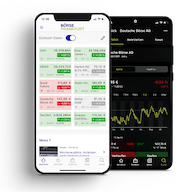Glossary
- Call (warrant)
- Cancelled order
- Cap (investment and leverage products)
- Capital increase
- Capital market
- Capital reduction
- Capital stock
- Carry trades
- Cash dividend
- Cash market
- Cash settlement (warrants)
- Cash settlement price
- Cashflow
- CDAX
- Central bank
- Central register shares
- Certificate
- Certificate of renewal
- Changes to the composition of an index
- Chart
- Chart analysis
- Classic All Share
- Clean price
- Clearing
- Close out
- Closed-end fund
- Closing Price
- Coco bond
- Collective custody
- Commercial paper
- Commission
- Commission trading
- Commodity futures
- Commodity futures exchange
- Common gap
- Compliance guidelines
- Conditional capital increase
- Consumer Confidence
- Continuous trading
- Convertible bond
- Cooperative stock exchanges
- Corporate bond
- Correlation coefficient
- Counter transaction
- Countercyclical investment
- Countercyclical stocks
- Country risk
- Coupon
- Course notes
- Covered warrant
- Creation
- Credit risk
- Creditworthiness
- Cum
- Currency bond
- Cyclical shares
- Cyclical stocks
Consumer Confidence
The American Consumer Confidence Index, which is published by the Conference Board, reflects the private households’ evaluation of their current and future economic situation. For this purpose, 5,000 questionnaires are sent out in the US. An average of 3,500 households actually return their answers.
The participants are asked to give their evaluations on five components:
- the economic conditions in the area the participant lives in
- an assessment of these conditions in six months
- the current availability of jobs in the area
- the availability of jobs in six months
-
the family income in six months.
A partial index is calculated for each one of those components; together, they make up the total index. Furthermore, the participants’ consumption intent for the following six months is tracked. This includes information on cars, houses, holidays and larger purchases. In good economic times, or with good prospects looming, more investments in durable economic goods are made than in bad times.
There are only few days between the surveying of the households and the publication of the data. If consumer confidence is too high, this points to a good economic development and perhaps even to its overheating.
The American Consumer Confidence Index is published on the last Tuesday of the month.




